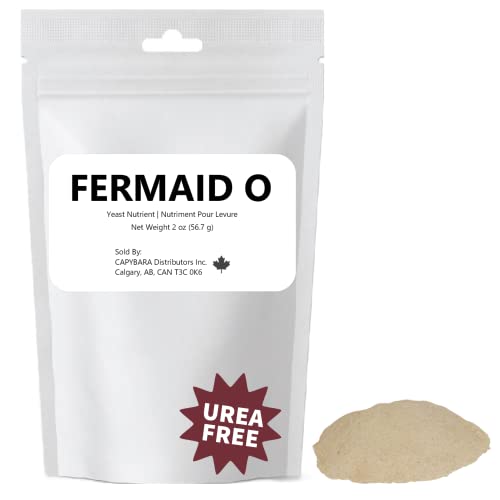You are using an out of date browser. It may not display this or other websites correctly.
You should upgrade or use an alternative browser.
You should upgrade or use an alternative browser.
Liquid yeast, just how good?
- Thread starter pms67
- Start date

Help Support The Homebrew Forum:
This site may earn a commission from merchant affiliate
links, including eBay, Amazon, and others.
IainM
Landlord.
By definition, if they have mutated then their genome is different, so they won't all have the same genes. What you have is basically a miniature version of the species problem: how different do they have to be, and by what measure, to be considered a different strain?
TRIGGER WARNING: SCIENCE
Right, evolution is continuous and language is discrete, so the classification of organisms as order/family/species/strain is necessarily arbitrary.
However, I do mean that they have the same genes. The sorts of mutations that occur over a small number of generations aren't typically the sorts of rare mutation that duplicate, delete, fuse or majorly alter or create genes. The two strains will have the same 6000 odd genes in the same positions on the same chromosomes. No, the type of mutation that occur on this timescale are typically point mutations, where isolated nucleotide switch identity, say from a G to an A. This change could be in a gene and, if it is a non-synonymous mutation, this will affect the protein that the gene codes for, and could have downstream effects on the beer. Alternatively, the mutation could be outside of the gene and alter the binding of that stretch of DNA to the molecules that read the gene, and thus cause, for instance, an enzyme that changes the taste of the beer to be produced at a higher or lower level.
IainM
Landlord.
Considering all strains though, do you think that would lead to all dried yeast to mutate to a point where it ferments with less esters? Or would the result be more random and therefore fair to say that dry yeast producing bland beers is not a result of the drying process?
I have no idea.
strange-steve
Quantum Brewer
- Joined
- Apr 8, 2014
- Messages
- 6,027
- Reaction score
- 5,804
@pms67
You see what you've started? The the gobsh*tery is in full force now!
You see what you've started? The the gobsh*tery is in full force now!
MyQul
Chairman of the Bored
@pms67
You see what you've started? The the gobsh*tery is in full force now!
Where's my safe space!!!
I never said the scientists were the g*******s !!!!!
I only asked a question, Stuff you microscope bashers ðŸËÂ
StrangeSteve , admit it, this is you buddy ðŸËâ°

I only asked a question, Stuff you microscope bashers ðŸËÂ
StrangeSteve , admit it, this is you buddy ðŸËâ°


£6.99
Stevenson Reeves Triple Scale Hydrometer (S1011) For Home Brewing and Winemaking
Medi Exchange

£9.99 (£199.80 / kg)
Lalvin EC-1118 Wine Yeast (10 Pack) - Champagne Yeast - Make Wine Cider Mead Kombucha At Home - 5 g Sachets - Saccharomyces cerevisiae - Sold by CAPYBARA Distributors Inc.
CAPYBARA Distributors Inc. (UK)

£7.99
£14.99
Craft Brew: 50 homebrew recipes from the world's best craft breweries
Sarahs Bookshop UK

£11.95
£14.99
FOR THE LOVE OF HOPS (Brewing Elements): The Practical Guide to Aroma, Bitterness and the Culture of Hops
Amazon.co.uk

£17.95
£24.95
DIAH DO IT AT HOME Fermenter 30l Fermentation Bucket with Tap, Airlock, Lid, and Bung, Homebrew Wine Making
do-it-at-home

£12.82
£14.99
Brew it Yourself: Make Your Own Beer, Wine, Cider and Other Concoctions
Amazon.co.uk

£11.81
Digital Temperature Watch Heating Thermometer Home Brewing Tools for Wine Bottle
B&D DIRECT STORE

£38.63 (£0.39 / 100 ml)
Cider Making Kit - Full Starter - 10L/2 Gallon/20 Pints Home brew Beer Ale Lager
247 Homebrew

£14.25
£18.99
How to Brew: Everything You Need to Know to Brew Great Beer Every Time
Amazon.co.uk

£8.99 (£158.55 / kg)
Fermaid O Yeast Nutrient - 2 oz (56.7 g) - Make Wine Cider Mead Kombucha at Home - Sold by CAPYBARA Distributors Inc.
CAPYBARA Distributors Inc. (UK)
The biggest hurdle for me when it comes to liquid yeast is storage. Even at full tilt, I'll brew once a month maximum. I like to vary my styles between brews so that it usually goes pale ale of some type / Dark ale of some type / Something interesting. So it could be 3 months that I'd need to store the yeast that I might use for a particular style, longer if I was experimenting with yeast styles.
MyQul
Chairman of the Bored
The biggest hurdle for me when it comes to liquid yeast is storage. Even at full tilt, I'll brew once a month maximum. I like to vary my styles between brews so that it usually goes pale ale of some type / Dark ale of some type / Something interesting. So it could be 3 months that I'd need to store the yeast that I might use for a particular style, longer if I was experimenting with yeast styles.
The technique of 'yeast skavenging' might be appropriate for you:
Go to the supermarket (I got mine from ASDA) and buy a pack of 250ml lemonade bottles - I think they come in a 12 pack, you cant buy any less - and a turkey baster (if you havent already got one.)
36 hours after you've pitched your yeast, crack open the FV just enough so you can get the turkey baster in. From just below the krausen/barm, using the sanitised turkey baster fill up one of the 250ml bottles. Leave the lid on the pop bottle loosely and let it ferment out for a few days. Then put it in the fridge.
You then have a small amount of yeast (about 7ml) in the bottom of the bottle which you can use as a starter. From what I understand this is very similar to top cropping so you can keep doing this from brew to brew many times, possibly even indefinately.
Four of these small bottles take up about 6 square inches of space in the fridge so you can have four (or even more if you want of course) different strains kept for use, in a very small amount of space
I find this small amount of yeast is enough to ferment out 10L of about 1.038 wort if put in a 1L starter. So for a full 23L brew you'd need to step it up, so something like putting the yeast from the bottle into 500ml then putting that into 1.2L/1.3L should do the job. But it might pay to use a yeast calculator to make sure http://www.brewunited.com/yeast_calculator.php
The yeast will easily keep in the fridge for 3 months, you just might have to do an extra step up or two, to account for the tailing off of cell count as the yeast gets older and the viabilty gets lower (but even that, is another point argued amongst some yeast wranglers, that the viability hardly tails off at all)
BeerCat
Landlord.
- Joined
- May 6, 2015
- Messages
- 5,292
- Reaction score
- 1,694
Where's my safe space!!!
At a Uni near you. :mrgreen:
The technique of 'yeast skavenging' might be appropriate for you:
Go to the supermarket (I got mine from ASDA) and buy a pack of 250ml lemonade bottles - I think they come in a 12 pack, you cant buy any less - and a turkey baster (if you havent already got one.)
36 hours after you've pitched your yeast, crack open the FV just enough so you can get the turkey baster in. From just below the krausen/barm, using the sanitised turkey baster fill up one of the 250ml bottles. Leave the lid on the pop bottle loosely and let it ferment out for a few days. Then put it in the fridge.
You then have a small amount of yeast (about 7ml) in the bottom of the bottle which you can use as a starter. From what I understand this is very similar to top cropping so you can keep doing this from brew to brew many times, possibly even indefinately.
Four of these small bottles take up about 6 square inches of space in the fridge so you can have four (or even more if you want of course) different strains kept for use, in a very small amount of space
I find this small amount of yeast is enough to ferment out 10L of about 1.038 wort if put in a 1L starter. So for a full 23L brew you'd need to step it up, so something like putting the yeast from the bottle into 500ml then putting that into 1.2L/1.3L should do the job. But it might pay to use a yeast calculator to make sure http://www.brewunited.com/yeast_calculator.php
The yeast will easily keep in the fridge for 3 months, you just might have to do an extra step up or two, to account for the tailing off of cell count as the yeast gets older and the viabilty gets lower (but even that, is another point argued amongst some yeast wranglers, that the viability hardly tails off at all)
I have used this method myself and got 10 brews from one strain. I know another brewer who has kept the same strain going for almost 2 years. As has been stated the yeast will change slightly, for the better. To the best of my knowledge this will not happen with dried yeast. Sanitation MUST be meticulous.
The technique of 'yeast skavenging' might be appropriate for you:
That's really interesting and looks like a promising possible solution. There is a really badly designed salad tray in the bottom of our fridge that never gets used. I think that would hold the pop bottles you describe, probably about 12, which would allow a decent 'library' of yeast.
(Goes off to measure fridge.......) ðŸËâ¬
peebee
Out of Control
It's true! It was explained to me as a result of the yeast drying process. The yeast mutates to a ravenous form of saccharomyces dessiccans, a native of the harsh Martian landscape. It got my pet hamster.... To the best of my knowledge this will not happen with dried yeast. ...
Saisonator
Landlord.
I have used this method myself and got 10 brews from one strain. I know another brewer who has kept the same strain going for almost 2 years. As has been stated the yeast will change slightly, for the better. To the best of my knowledge this will not happen with dried yeast. Sanitation MUST be meticulous.
I would imagine you would have to keep all aspects of maintaining the yeast very consistent and favourable.
Otherwise it could mutate too far from the original sample.
Sadfield
Landlord.
It's true! It was explained to me as a result of the yeast drying process. The yeast mutates to a ravenous form of saccharomyces dessiccans, a native of the harsh Martian landscape. It got my pet hamster.
Surely that was the Saccharomyces Freddistarr variant?
peebee
Out of Control
Hum, I'm not an expert but I think I see where you are coming from:Surely that was the Saccharomyces Freddistarr variant?
View attachment starr-620_2133674a.bmp
It's true! It was explained to me as a result of the yeast drying process. The yeast mutates to a ravenous form of saccharomyces dessiccans, a native of the harsh Martian landscape. It got my pet hamster.
Which goes back to my argument the drying process does have a detrimental effect on the yeast.
peebee
Out of Control
And my hamster!Which goes back to my argument the drying process does have a detrimental effect on the yeast.
Similar threads
- Replies
- 23
- Views
- 3K
- Replies
- 6
- Views
- 1K




























![BREWING THERMOMETER STICKERS ACCURATELY MONITOR FERMENTING BEER & WINE LIQUID TEMPERATURES 5PCS HOME BREW SPIRITS WINE LCD ADHESIVE [US]](https://m.media-amazon.com/images/I/311DDjo2X3L._SL500_.jpg)
